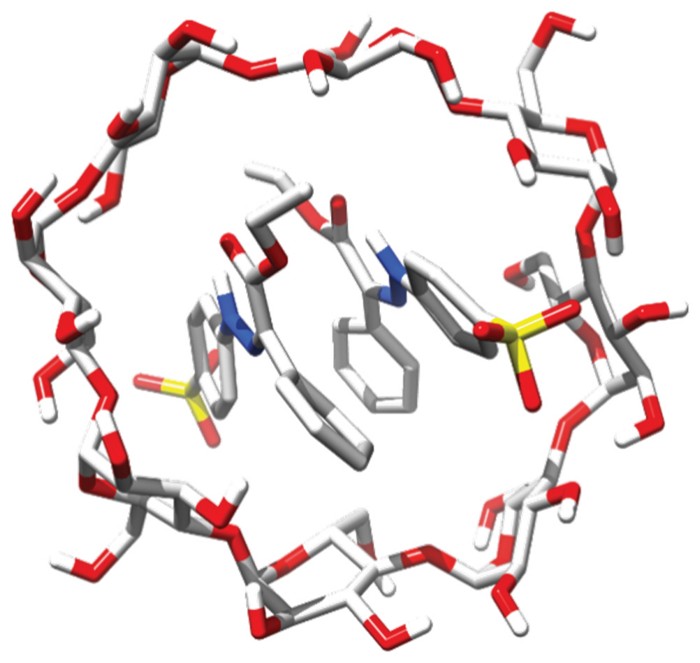Taking the steam out of γ-cyclodextrin synthesis
Taking the steam out of γ-cyclodextrin synthesis
Hydrazone template could make it cheaper to prepare this host molecule

Anew method for making γ-cyclodextrin could provide a cheaper and simpler route to this promising yet pricey host molecule. The synthesis, which uses a photoswitchable hydrazone template, might also pave the way for new materials based on γ-cyclodextrin.
Cyclodextrins—multiple glucose moieties linked together in a ring—have hydrophobic interiors and hydrophilic exteriors. This allows them to protect and solubilize guest molecules, including fragrances and pharmaceuticals. Cyclodextrins release perfumes when warmed by body heat, and they’re used as excipients for many drugs, including the anti-inflammatory agent dexamethasone and the angina treatment nitroglycerin.

Cyclodextrins’ properties and prices vary based on their size: α-cyclodextrin has 6 glucose units and costs about $200 for 25 g; β-cyclodextrin has 7 glucoses and costs around $70 for 25 g. Relatively large γ-cyclodextrin, which is made of 8 glucose moieties and is the most water-soluble of the three, costs almost $800 for just 5 g of material.
Because γ-cyclodextrin dissolves easily in water, it’s attractive as a host molecule. But that property also makes γ-cyclodextrin tough to synthesize and isolate on an industrial scale. Organic templates boost the yield of γ-cyclodextrin in enzymatic syntheses. However, removing these templates requires an energy-intensive steam distillation process, which makes the molecule expensive.
Now, chemists have come up with a template that eliminates the need for steam distillation. Researchers led by Dartmouth College’s Ivan Aprahamian and Dale F. Mierke and the Technical University of Denmark’s Sophie R. Beeren have developed an enzymatic synthesis ofγ-cyclodextrin that uses a photoswitchable hydrazone (shown) as a template (Chem 2021, DOI: 10.1016/j.chempr.2021.05.013).
The chemists start with maltohexaose—a linear chain of 6 glucose units—and add the enzyme cyclodextrin glucanotransferase. This enzyme can shorten, elongate, cyclize, or open sugary molecules to form different structures, including γ-cyclodextrin. These sugary molecules are in equilibrium, Beeren explains, until the chemists add the Z isomer of the hydrazone template. Two of these Z-hydrazones bind within γ-cyclodextrin. That binding stabilizes the molecule and pushes the equilibrium to favor γ-cyclodextrin formation. Then the chemists destroy the enzyme and use light to switch to the E isomer of the hydrazone, which no longer fits within γ-cyclodextrin.
“We don’t need steam distillation,” Aprahamian says. “We just shine light, the hydrazone changes its shape, the binding affinity goes down, and we release theγ-cyclodextrin.” What’s more, using the hydrazone produces 6 times more γ-cyclodextrin than is made without the template molecule.
Rosa Iacovino, who studies cyclodextrins at the University of Campania Luigi Vanvitelli, says the work will encourage widespread use of γ-cyclodextrin and will allow chemists to use larger guest molecules within these host molecules.
Christopher Barner-Kowollik, who studies photochemistry in synthesis at Queensland University of Technology says the work advances chemists’ ability to use photochemically driven templating technology to make specific cyclodextrins. “It will be interesting to follow if the process shows industrial viability,” he says in an email.
In terms of scale-up, Aprahamian and Beeren tell C&EN that both the hydrazone and the cyclodextrin glucanotransferase enzyme are inexpensive. Next, they plan to use starch as their starting material because it is less expensive than maltohexaose.
